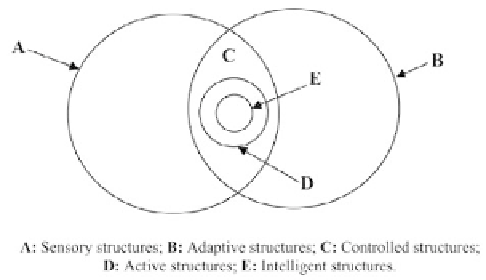Biomedical Engineering Reference
In-Depth Information
At the turn of the 70s and 80s in the last century, scientists
tried to deine intelligent structures/systems, and the discussions
inally came up with the following four qualifying features: actuation,
sensing, control, and time [35]. The created deinition [1] of smart
structures inally sounds like this:
“A system or material which has built-in or intrinsic sensor(s),
actuator(s) and control mechanism(s) whereby it is capable of
sensing
a stimulus,
responding
to it a predetermined manner and extent, in a
short/appropriate
time and reverting to its originally state as soon
as it stimulus is removed.”
Changing the properties in context of sensing environment
through implemented reaction mechanism seems to be the feature
of intelligence being. When these variants are assigned to the
systems, our attention is guided to the variable operating levels of
data exchange. When we think about materials, it is hard to imagine
sensing coupling with actuating and managing by supervision
function, as illustrated in Fig. 8.1, which presents the classiication
of smart structures by Rogers.
Figure 8.1
Classiication of smart structures [36].
During the US Army Research Ofice Workshop, Rogers and co-
workers [37], deined smart materials as
materials, which possess
the ability to change the physical properties in a speciic manner in
response to speciic stimulus input.
Following this expression, we may say that smart materials are
a new class of materials, possessing adaptation features on external
stimuli with their innate intelligence.

















